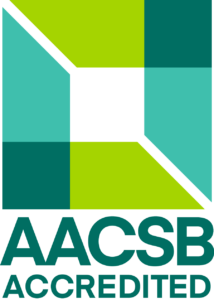Category management (in English)
- Credits: 8
- Ending: Examination
- Range: 2P + 2C
- Semester: winter
- Year: 2
- Faculty of Commerce
Teachers
Included in study programs
Teaching results
To provide students with a set of knowledge about the category management of its essence and principles, to understand its role in store management and the context of the development of its management with the development of the buyer's shopping behavior; comprehensively analyze categories and apply business activities to the practice of retailers.
Knowledge: to understand the issues of category management, its meaning, essence and principles, development, to understand the issues of application of business-marketing principles and the differences in their implementation.
Competences: ability to work with information - search for it, select it, independently analyze and synthesize with orientation the ability to independently apply the principles and functions of business within the category of management.
Skills: ability to verify and evaluate the use of theoretical approaches to category management in the activities of business entities; ability to apply, critically evaluate the situation in the management of the assortment of the store, to propose solutions to problems of tactical and strategic level.
Indicative content
1. Introduction to the category management.
2. Purchase-category management-supply chain relationship.
3. Characteristics of the shopping behavior of the consumer (shopper) in the store.
4. Placement of product categories in the store according to the needs of the shopper.
5. Methodology of using product group management and store preparation.
6. Defining a category and its role.
7. Evaluation of the category and its strategy.
8. Assortment management methods.
9. Introduction of a pilot proposal for the deployment of the category in the store and its evaluation.
10. Design and creation of the shopping atmosphere of the store.
11. Financial and performance criteria for category evaluation.
12. Identification of categories in the store.
13. Store customer relationship management.
Support literature
1. Weele v. A. Procurement and Supply Chain Management. Hampshire: Cengage Learning EMEA, 2022. 8. vydanie. 420 s. ISBN 978-1473779112.
2. Blokdyk, G. Category Management A Complete Guide Book. San Francisco: 5STARCooks, 2020. 225 s. ISBN 978-1867-468585.
3. O´Brien, J. Category Management in Purchasing. London: Kogan Page Ltd., 2019. 520 s. ISBN 978-0749-4826-19.
Syllabus
1. Introduction to the category management. Basic terms. Store space management. Merchandising and category management. Assembling product groups and creating clusters. 2. Purchase-category management-supply chain relationship. Purchasing structure, function and strategy. Supply chain. 3. Characteristics of the shopping behavior of the consumer (shopper) in the store. Socio-economic environment of the buyer. Trends in shopping behavior. New consumer. Tailoring products to shopper' needs. 4. Placement of product categories in the store according to the shopping habits of the consumer. The importance and trends of consumer research. Category as a solution to the buyer's purchasing problem. Strengthening the loyalty of the buyer through the created categories to the store. The importance of the deployment plan for the store. 5. Methodology of using product group management and store preparation. Defining product categories. Category segmentation. Planning decisions about the organization of the store. 6. Defining a category and its role. How to select a category task? Change the category task. 7. Evaluation of the category and its strategy. Analysis of the development of category sales. Tests in the store. Types of category strategies. 8. Assortment management methods. Assortment. Sales Support. The price. Merchandising. Assortment reorganization. 9. Introduction of a pilot proposal for the deployment of the category in the store and its evaluation. Creating a category structure to dynamize the placement of categories. Basics of physical placement of goods. Tracing the buyer around the store. Determining the position and allocating space for shelves. 10. Design and creation of the shopping atmosphere of the store. Basics of design. Store design. Interaction between classic store design and web design. 11. Financial and performance criteria for category evaluation. Profitability and profit indicators of the store, sales area and category. 12. Identification of individual product categories in the store. Buyer needs, content and category definition. Strategy and category image. Shelf layout plan. 13. Store customer relationship management. New competitors and loyal customers. Customer satisfaction and dissatisfaction. Basics of fidelity. Management, strategies and techniques for strengthening loyalty.
Requirements to complete the course
20% continuous semester assessment
20% semester work
60% written exam
Student workload
Workload: 208 hours
Attendance at lectures: 26 hours
Attendance at seminars: 26 hours
Preparation for seminars: 26 hours
Elaboration of a semester project: 26 hours
Preparation of literary research: 19 hours
Preparation for written verification of knowledge: 20 hours
Preparation for the exam: 65 hours
Language whose command is required to complete the course
English
Date of approval: 06.03.2024
Date of the latest change: 29.02.2024

